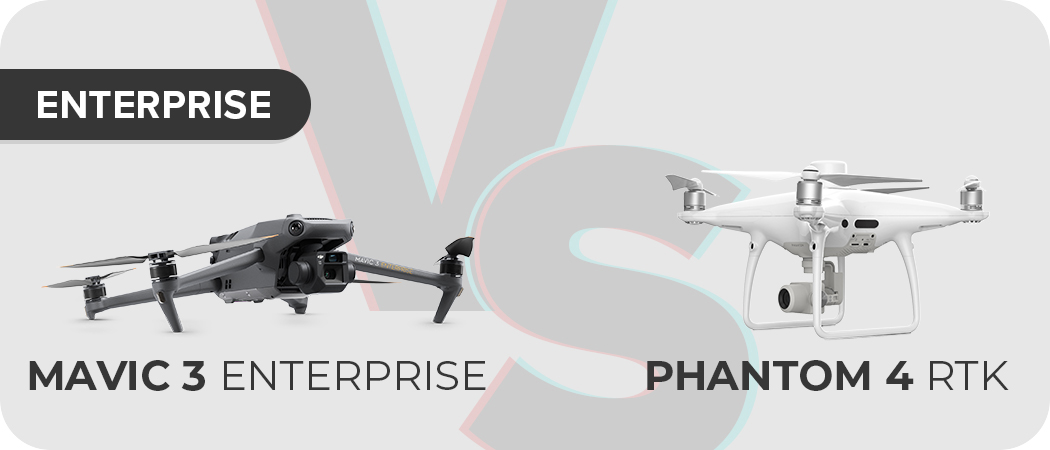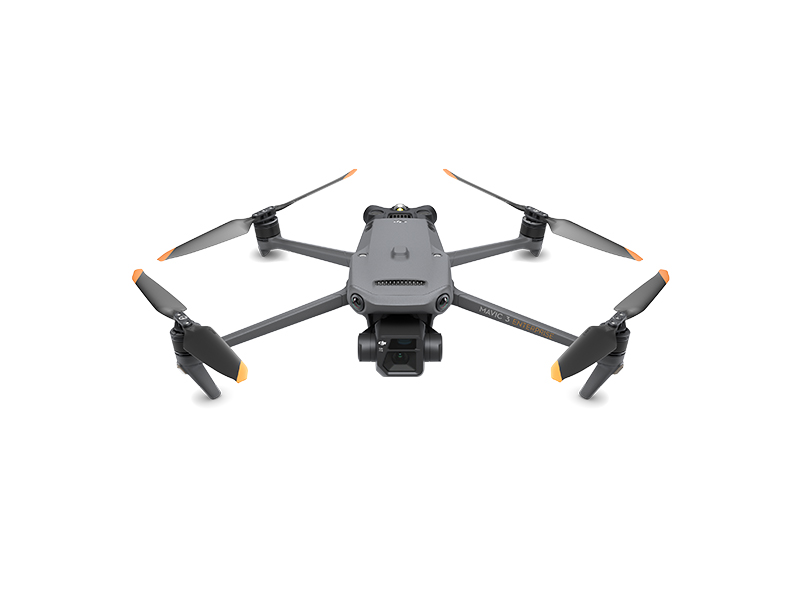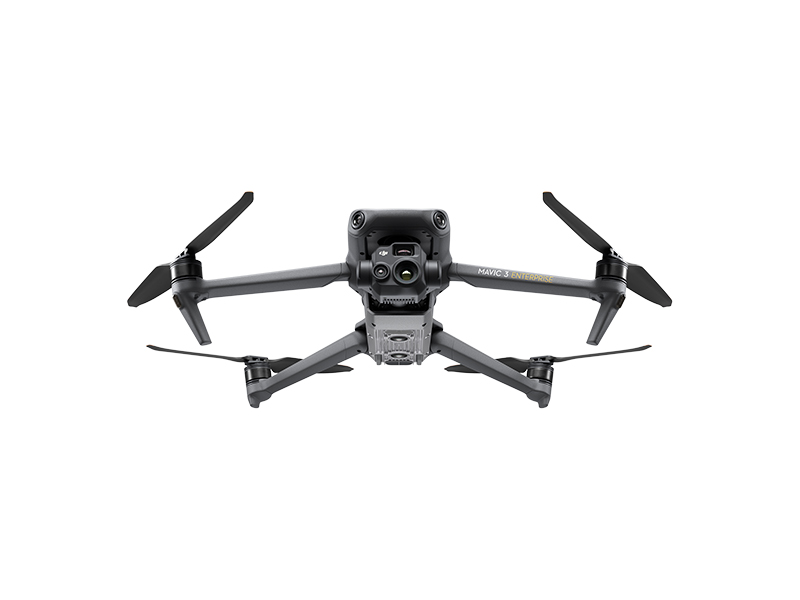DJI has just released a brand new enterprise series, the Mavic 3 Enterprise series. While it is available in two different models the Mavic 3 Enterprise and Thermal, this article will focus on only the Enterprise model. The Mavic 3E offers solutions to commercial drone users as it enhances efficiency for drone surveying/mapping and mission completion while compacting in a more light weight design for portability. Let's have a closer look at how the new Mavic 3 Enterprise compares to DJI’s other portable aerial surveying drone, the Phantom 4 RTK.
This new enterprise series undoubtedly takes inspiration from original models in the DJI Mavic 3 family offering key aspects such as compactibility and lightweightness for efficiency in aerial mapping. It offers similar surveying qualities to the Phantom 4 RTK but has been said to be the more efficient of the two, so here we’ll delve into the specific differences that explain why the Mavic 3 Enterprise is the preferable solution.
Key Differences

Design
Firstly, let’s have a look at the build of the aircraft. The first noticeable difference between the two models is that the Mavic 3E is foldable whereas the P4 RTK is not. With a more compact design in addition to a lighter bodyweight the Mavic 3E indeed is the more portable of the two.
The Mavic 3E series is also built to enable attachment of modules onto itself. This includes the attachment of the Speaker or the RTK module whereas the P4 RTK has the RTK built into its body. While the extension to its body might seem dragging, the weight of the Mavic 3E aircraft and the RTK still beats the Phantom 4 RTK, weighing at 1050g vs 1391g at takeoff.
Another key feature to note is the Mavic 3E has their propeller integrated with the aircraft whereas the P4 RTK requires their propellers to be installed with every use.
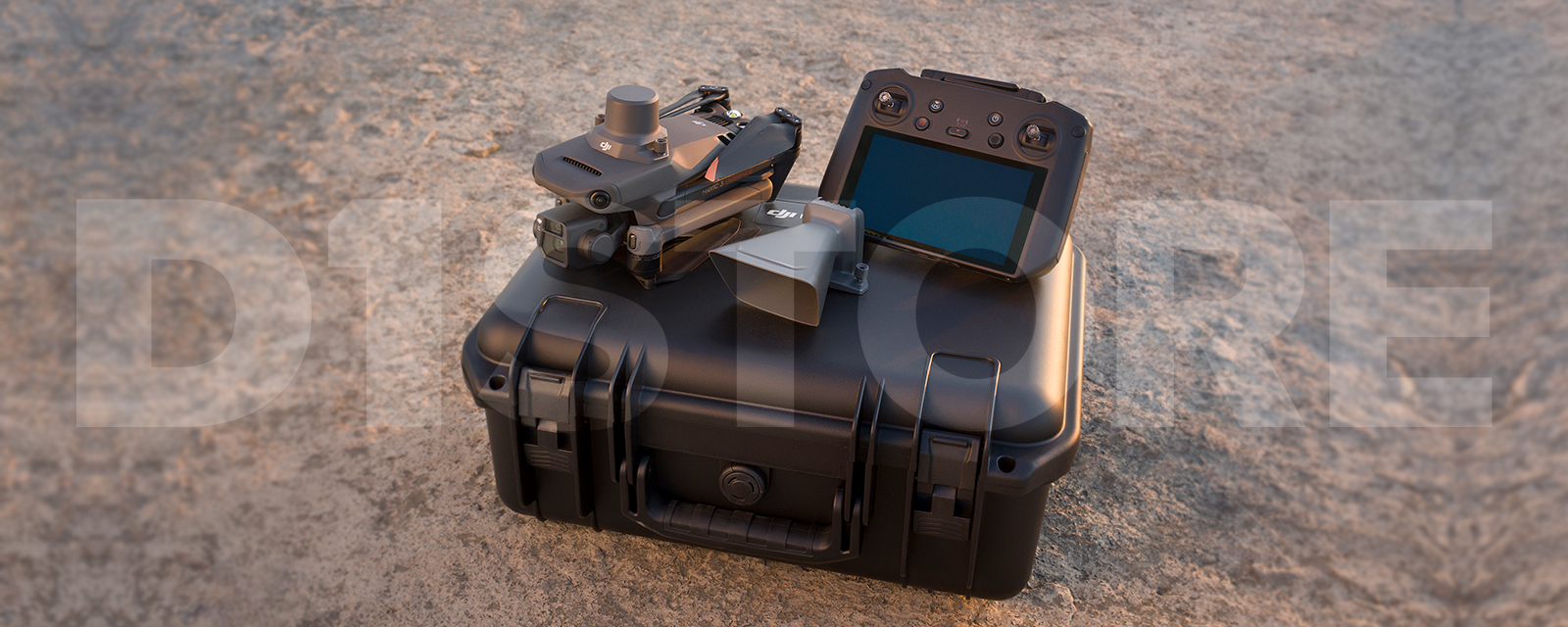
Camera
Now let’s compare the most important drone feature for aerial surveying, the cameras.
Wide camera
While both wide cameras have 20MP resolution, the Mavic 3E develops better image quality thanks to the larger 4/3 CMOS Hasselblad sensor compared to the P4 RTK’s one-inch sensor. The Mavic 3E’s camera further outperforms the P4 RTK as it is capable of achieving 3.3um pixel size compared to a 2.4 um pixel size for enhanced low-light performance , noise reduction and dynamic range which is desirable for increased surveying efficiency. An embedded Intelligent Low-Light Mode in the Mavic 3E furthermore reinforces its capabilities in dim light conditions. In terms of shooting intervals, The Mavic 3E surpasses the Phantom 4 RTK with a much shorter 0.7 seconds between shots whereas the Phantom has a longer interval of 2.5 seconds.
What’s good is both models do benefit with mechanical shutter for clear images regardless of aircraft movement and speed.

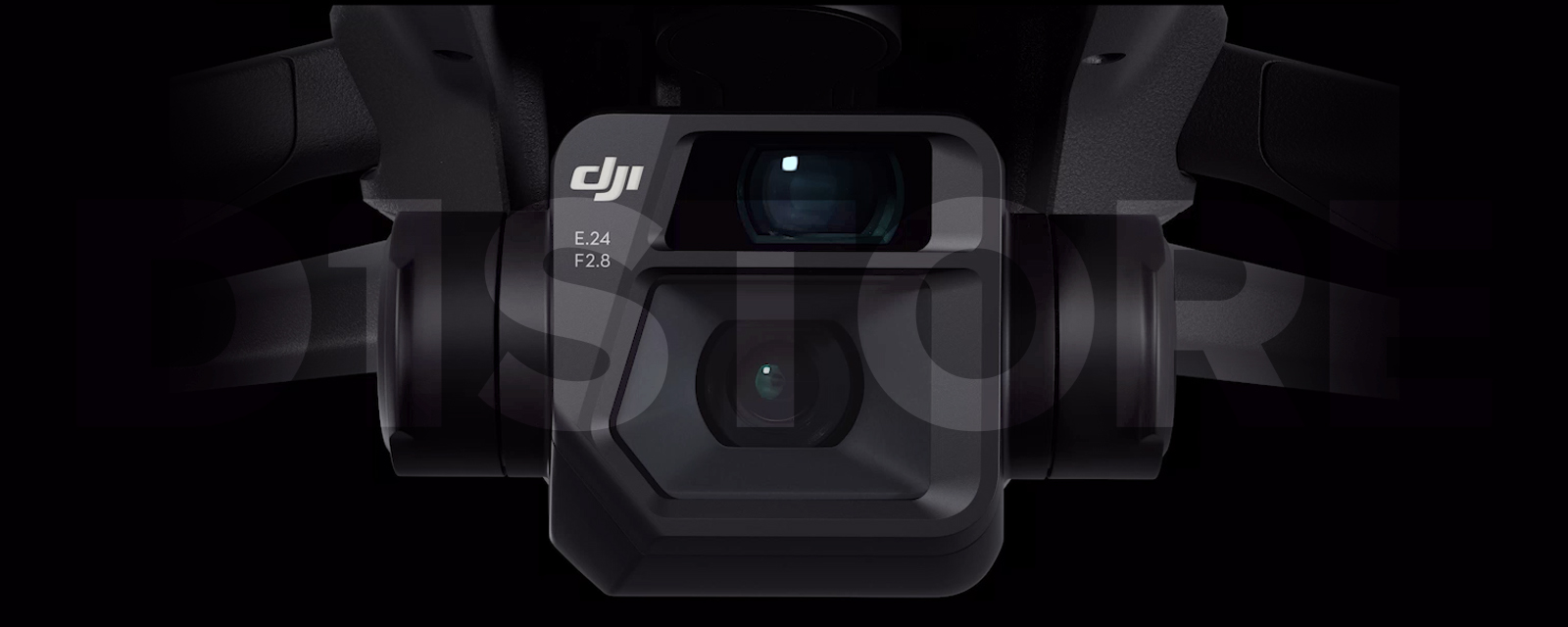
Read More: Introducing DJI Mavic 3 Enterprise: A Compact Commercial Drone Solution
Tele camera
The Mavic 3E further benefits from an additional camera, the telephoto camera that is not present in the Phantom 4 RTK's model. This feature enables observations from afar with a 12MP camera capable of achieving 56x hybrid zoom.

Surveying Efficiency
The Mavic 3E, compared to the Phantom 4 RTK is much more efficient when it comes to aerial surveying. This is thanks to the improved sensor (thus pixel size), shorter shooting interval and longer battery life of 45 minutes as opposed to the Phantom’s 30 minutes battery life.
To add on to existing benefits, when the GSD is 1 cm, tests have shown that the Mavic 3 Enterprise is up to eight times more effective than the P4 RTK. The Mavic 3E's orthophoto efficiency can cover 2.25 square kilometres with 5cm GSD, which is 1.9 times more area than the Phantom 4 RTK.
Coming soon to future firmware and unique to the Mavic 3E only, the Smart Oblique Capture enables the gimbal to take multi-angled images thanks to the automatic gimbal rotation. This feature saves a lot of time as the Mavic 3E would only need to conduct two flights over the surveyed area to obtain the necessary data whereas the P4 RTK requires five flights within various flight grid patterns to obtain the same results.
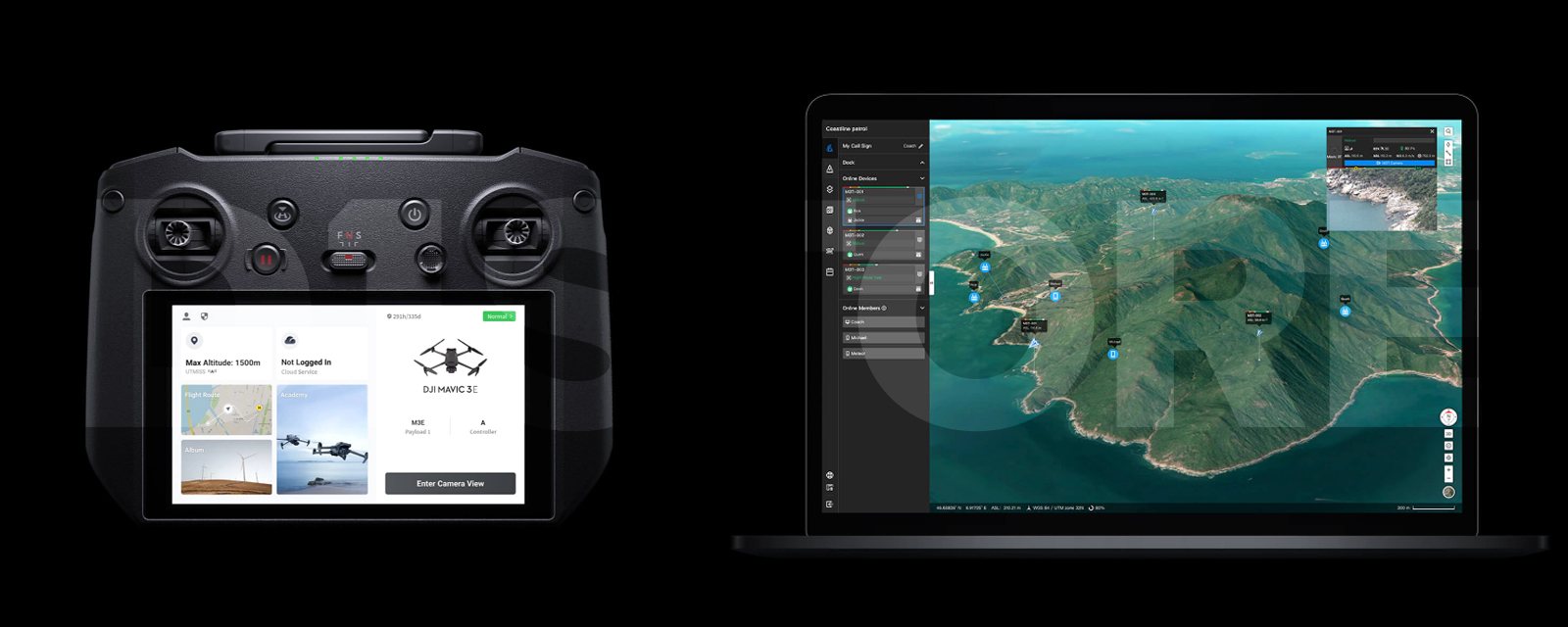
Although there are many differences separating the capabilities between each drone model, both have in common the TimeSync feature, which continuously aligns the flight controller, camera, and aircraft's RTK module. This makes sure each image has the most precise metadata and fixes the positioning data to the optical centre of the lens, optimising the output from photogrammetric techniques and enabling centimeter-level positioning data for the image.
Accessories that pair well with both models is the D-RTK 2 base station which is a high-precision GNSS receiver that supports all major-satellite navigation systems. This is ideal to equip with both enterprise drones to achieve high accuracy levels through real-time differential corrections that generate centimetre-level positioning data.
Other GNSS systems such as GPS, Galileo and GLONASS are supported in both the Mavic 3E and the Phantom 4 RTK with the Mavic 3E supporting an additional BeiDuo system.
Read More: RTK vs GPS Position Hold
Performance
In terms of performance, both series lack an IP rating disabling use in wet conditions. However, the Mavic 3E is capable of functioning in slightly more varied environments whereby it can fly in temperatures under 0 degrees from -10 to 40 degrees whereas the Phantom 4 RTK can only operate from temperatures from 0 to 40 degrees. Not to mention the Mavic 3E also features improved wind-speed resistance of 12m/s compared to the P4 RTK’s 10m/s.

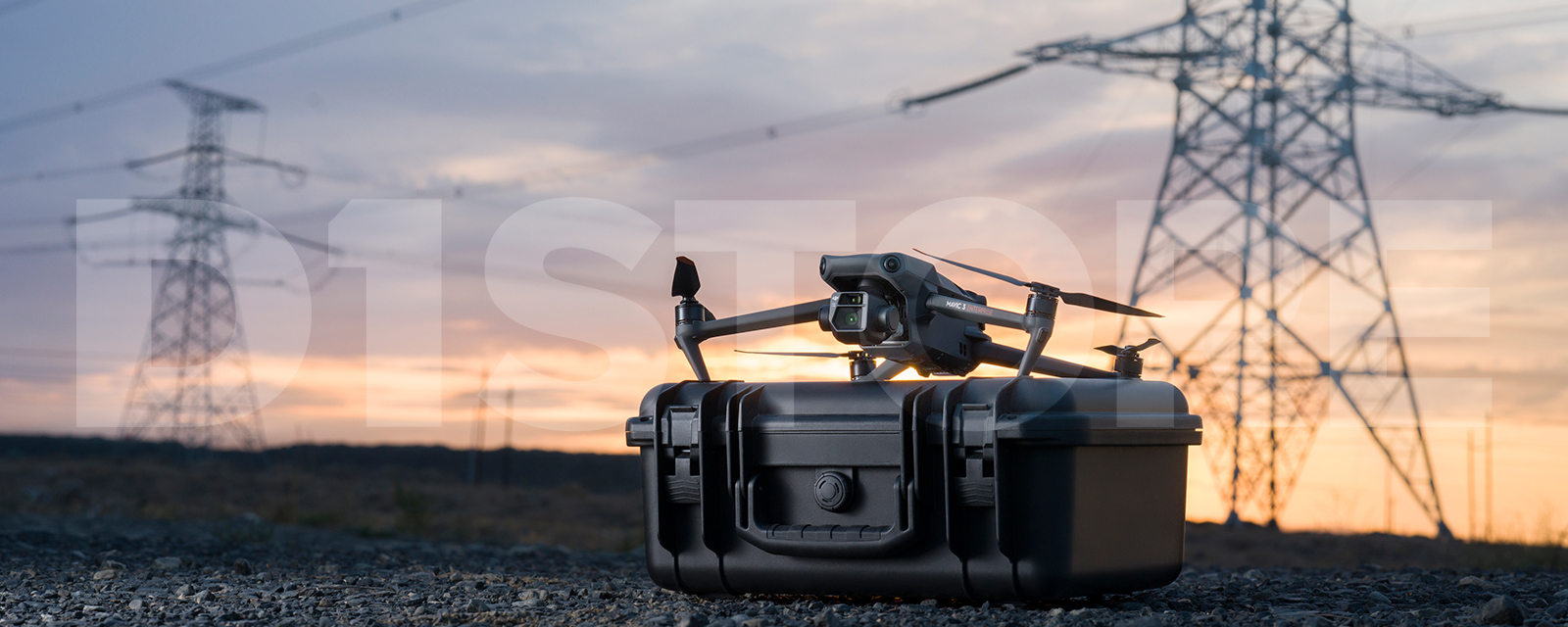
Safety Features
Again the Mavic 3E reigns superior in yet another aspect crucial for drone operation. Since the Mavic 3E is a newer edition to the enterprise family, it is unsurprising that it will feature more up-to-date technology for greater flight security.
The Mavic 3E is equipped with an omnidirectional binocular vision system compared to a forward/rear/downward binocular vision system in the Phantom 4 RTK. This enables for more spatial awareness during flight. As well, the Mavic 3E has Advanced Return to Home for automatic flights back to the home point for when the aircraft loses transmission connection or when you want to end your mission early. APAS 5.0 or Advanced Pilot Assistance System is also available with only the Mavic 3E whereby the aircraft will automatically sense and navigate around obstacles during flight. These additional safety features present in the Mavic 3E ensure optimised flying through enhanced drone protection.
Read More: How Can DJI Enterprise Drones Be Used For Agriculture?
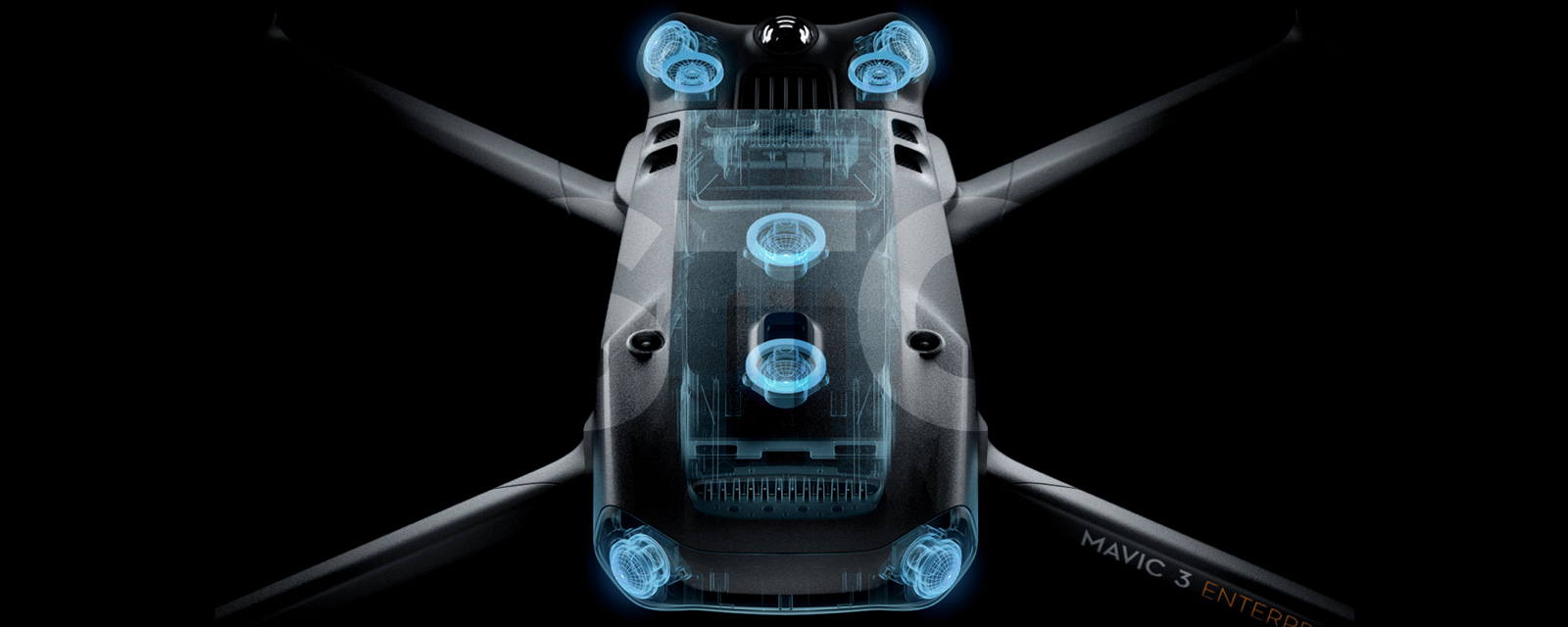
Controller
Operations for each enterprise models discussed require different remote controllers. The newer Mavic 3E requires its own DJI RC Enterprise RC that features an ultrabright 5.5” touchscreen. This is meant to be an improved version of the standard DJI RC. The Phantom 4 RTK uses the P4RTK RC as well as the SDK remote controller which is compatible with smartphones.
Differences continue with the OcuSync transmission system whereby the Mavic 3E benefits from the new O3 Enterprise transmission system that connects up to 15kms away while the Phantom 4 RTK features an older system enabling only a max distance of 7kms for transmission capability.
The Mavic 3E pairs with the DJI Pilot 2 flight app that’s tailored to the needs of commercial pilots and compiles and tracks data with DJI FlightHub 2 and DJI Terra to produce effective results and achieve mission objectives. The Phantom 4 RTK on the other hand has GS Pro available for the SDK controller whereas the GS RTK is built into the P4RTK remote controller.
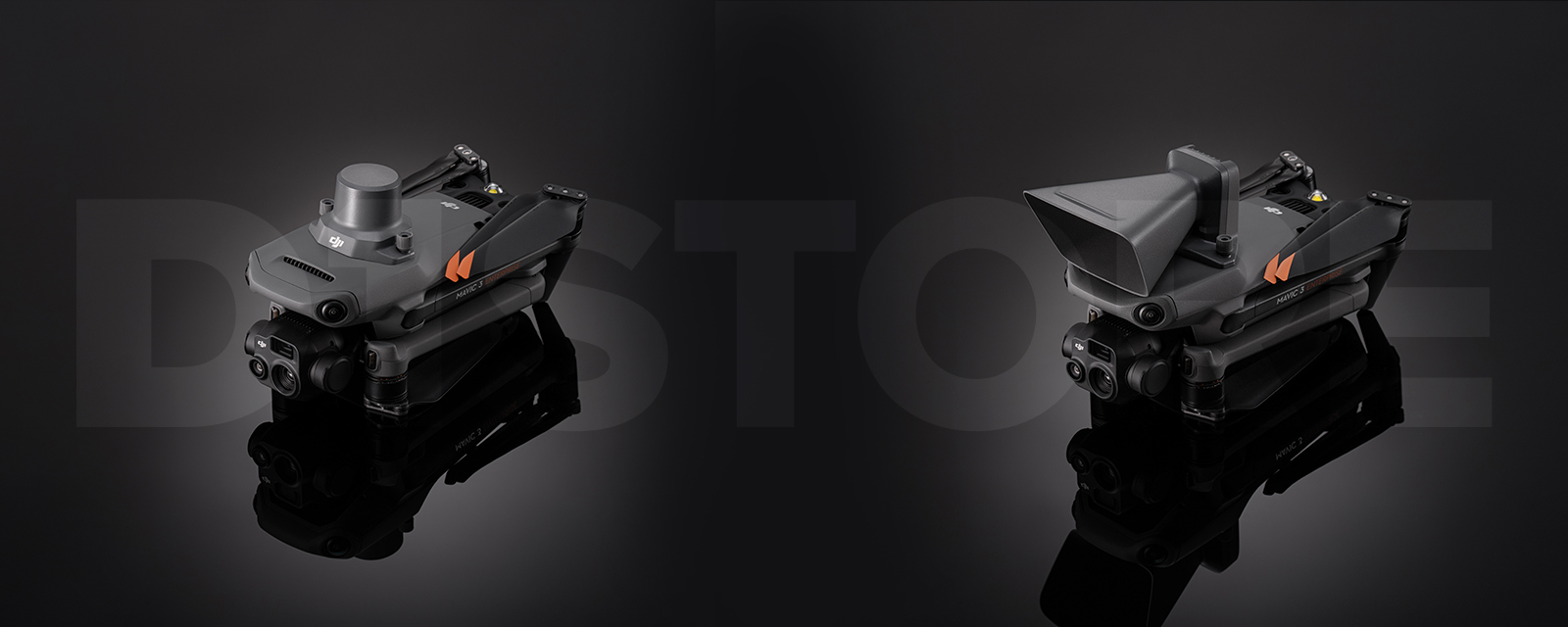
Mission Planning
Mission planning features vary greatly amongst both drone series as well. Check out the table to see what’s possible and what's not.
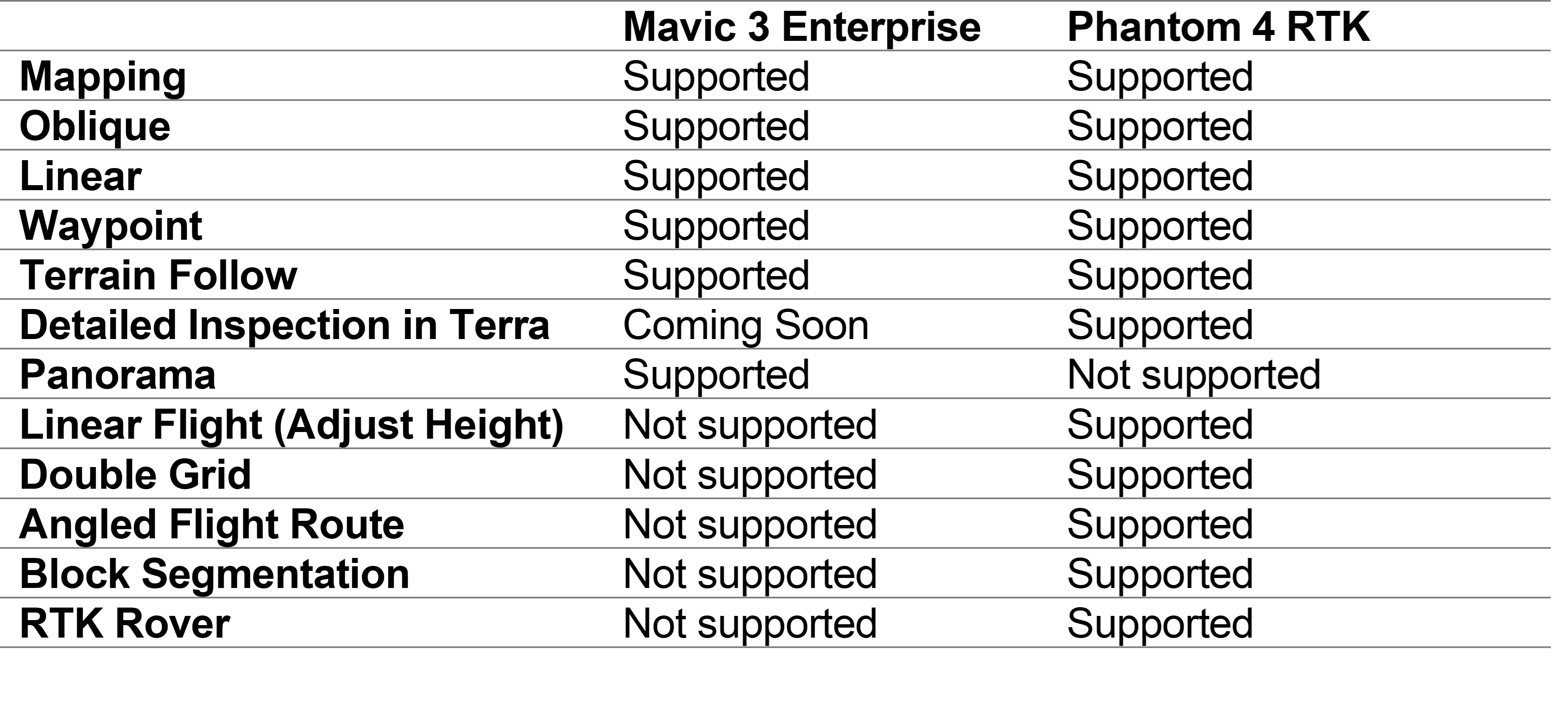
Shop with Confidence
The new DJI Mavic 3 Enterpise is available now in-store and online at D1 Store! Purchase online and receive free shipping in Australia for all orders over $99!
Shop with D1 Store and experience local support, service and the best prices. We've got convenient locations around Australia where you can see and experience the products first hand.



